The John Deere 5075E is a reliable and durable utility tractor that’s been a staple in the agricultural industry, praised for its versatility and efficiency. Even with its strong reputation, like any complex machinery, it can experience issues that may hinder its operation. Addressing these problems promptly ensures that your tractor remains in optimal working condition, thereby sustaining the productivity and longevity you’ve come to expect from a John Deere. From the engine’s health to hydraulic troubles, keeping a keen eye on your 5075E’s performance is key to preventing downtime.
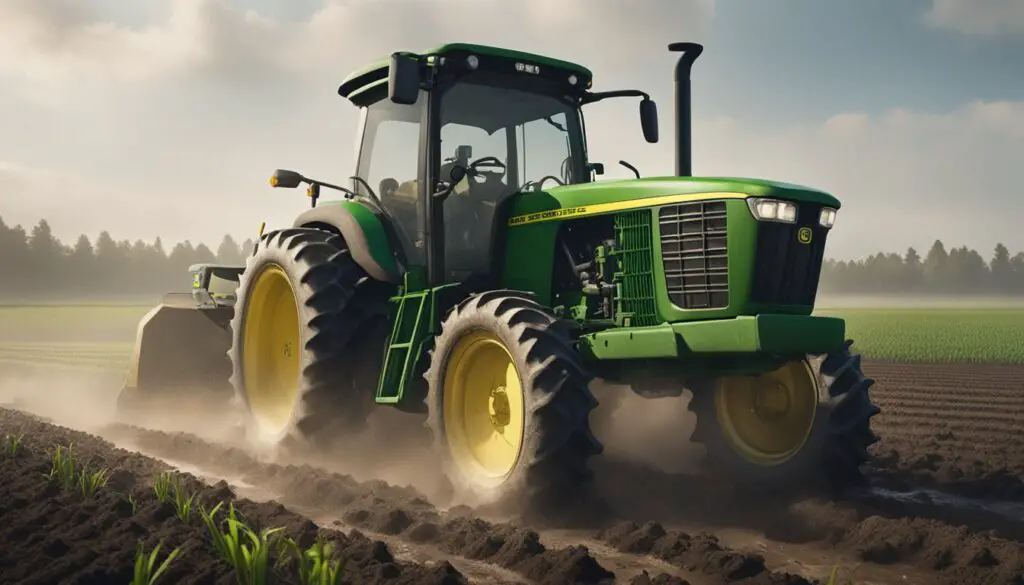
Handling a tractor involves a blend of routine maintenance and an understanding of how various environmental factors can affect its performance. By staying well-informed about common mechanical and electrical issues, and the recommended troubleshooting methods, you can minimize the impact of these problems. Creating a proactive maintenance routine and knowing when and how to tackle different challenges will not only extend the life of your tractor but also ensure it operates safely and effectively for all your needs.
Key Takeaways
- Maintaining your John Deere 5075E is crucial for optimal performance and longevity.
- Familiarize yourself with common issues and solutions to minimize tractor downtime.
- Access to the right support and resources is vital for effective problem-solving and repair.
Understanding Your John Deere 5075E
When you’re operating your John Deere 5075E, it’s essential to be familiar with its specifications and the layout of its controls. Knowing these details ensures efficient operation of your utility tractor and helps prevent any common issues that might arise.
Specifications and Features
Your John Deere 5075E is built to offer robust performance with 75 horsepower. As a utility tractor, it’s designed to handle a variety of tasks on your farm or property. Here’s a quick overview of what to expect:
- Engine: Turbocharged diesel engine with 3 cylinders
- Fuel Capacity: Able to hold up to 60 liters which means less refueling downtime
- Horsepower: 75 HP to handle robust operations
- Transmission: Offers 9 forward and 3 reverse gears
With these specifications, your tractor is equipped to take on challenges with efficiency and power.
Controls and Instrumentation
Understanding the controls of your 5075E is key to operating it safely and efficiently. Your tractor’s controls are strategically laid out for ease of use:
- Dashboard: Features gauges and instrument clusters that are easy to read at a glance for monitoring your tractor’s performance.
- Hydraulic Controls: Positioned conveniently for smooth operation of implements.
- PTO Control: Easily accessible for when you need to engage or disengage power to your implement.
Getting acquainted with these controls can help you maximize the capabilities of your John Deere 5075E and enjoy a smooth operating experience.
Routine Maintenance
Proper maintenance is essential to ensure your John Deere 5075E operates smoothly and avoids common issues. By checking fluid levels, replacing filters and oil, and inspecting tires and connections, you can significantly extend the life of your tractor.
Checking Fluid Levels
Regularly monitor your oil, coolant, and hydraulic fluid levels to maintain optimal performance. Keep an eye on the fuel tank to prevent any dirt ingress that could clog your fuel filter. Low fluid levels can lead to overheating and poor hydraulic function.
- Engine Oil: Check with the dipstick; add oil if below the recommended level.
- Coolant: Ensure the radiator is filled to prevent the engine from overheating.
- Hydraulic Fluid: Maintain proper levels to keep hydraulics responsive.
Replacing Filters and Oil
Clean filters and fresh oil are crucial for preventing contamination and maintaining efficient oil circulation in your engine.
- Fuel Filter: Replace it periodically to prevent blockages that can affect engine performance.
- Air Filter: Clean or replace regularly to ensure the engine receives clean air.
- Oil Change: Refer to your manual for the recommended interval. Always replace the oil filter along with the oil.
Inspecting Tires and Connections
Proper tire pressure ensures better fuel efficiency and control. Check for loose connections that can lead to operational failures.
- Tires: Maintain recommended pressure levels; check for wear and tear.
- Battery: Inspect for corrosion and ensure snug connections.
- Connections: Tighten any loose connections to avoid mechanical failures.
By staying attentive to these routine maintenance tasks, you’ll be set for a better performing and longer-lasting tractor.
Common Mechanical Issues
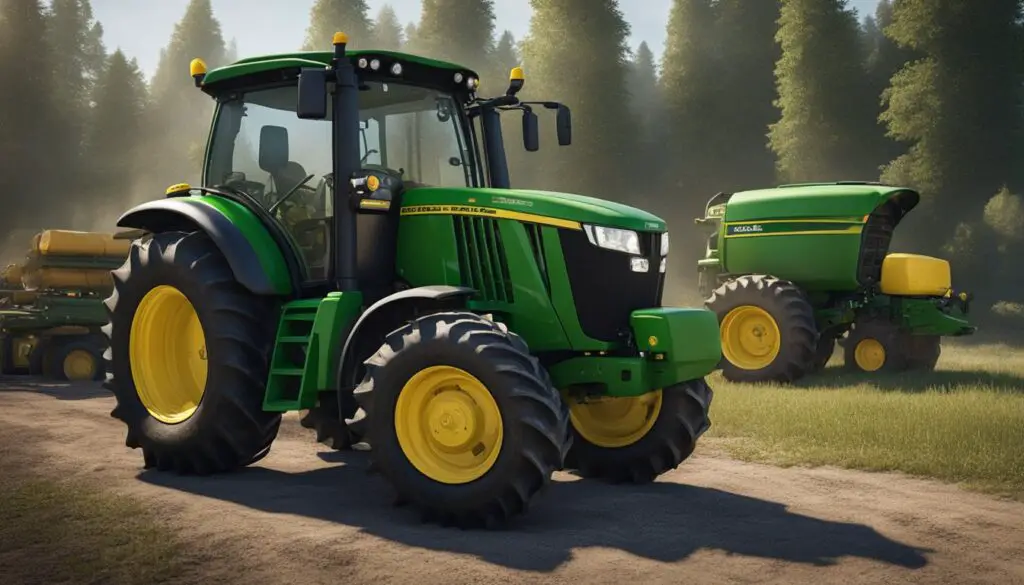
In addressing the mechanical concerns with your John Deere 5075E, you’ll uncover a few prevalent troubles. These focus on the transmission, engine, and hydraulic systems, which are critical to your tractor’s overall functionality.
Transmission Challenges
Your John Deere 5075E may experience transmission problems, often signaled by difficulty in gear shifting or noticeable slippage. To mitigate these issues:
- Inspect the transmission fluid levels and quality; a low or dirty fluid can lead to poor performance.
- Check for any leaks and ensure that the transmission filter isn’t clogged.
Engine Performance
Should your engine present issues, it’s typically with performance, such as rough idling or loss of power. Here’s what you can do:
- Engine overheats can be due to a clogged air filter or cooling system problems, so ensure these are clean and functioning.
- Regularly replacing fuel filters can prevent blockages that affect engine efficiency.
Hydraulic Concerns
Hydraulic problems can cripple your tractor’s lifting and moving capabilities. To troubleshoot a hydraulic problem:
- Verify the hydraulic fluid level; a low level can hamper pressure and operation.
- Inspect the hydraulic pump and valves for any signs of wear or damage that could impact performance.
Electrical Troubleshooting
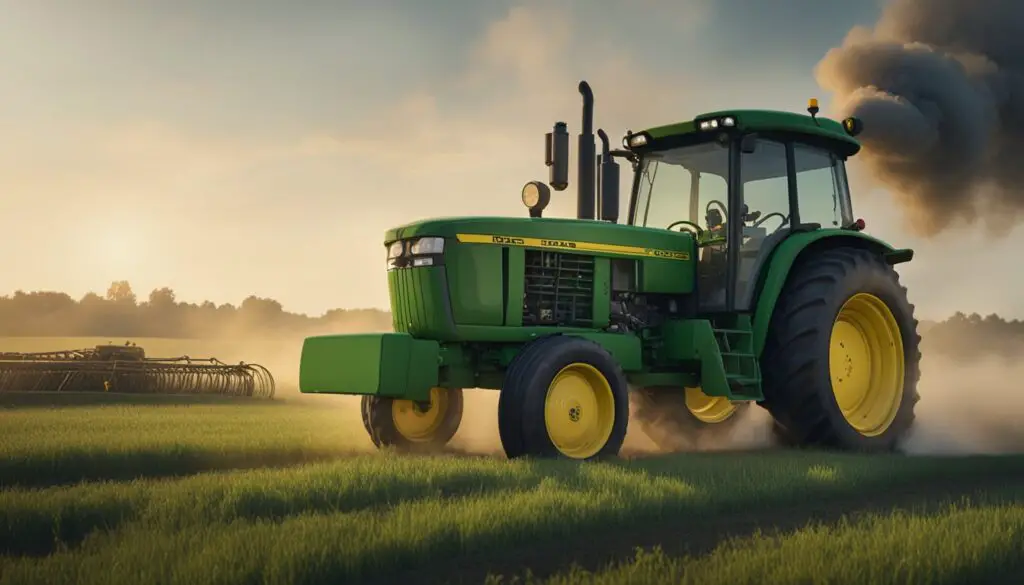
When you’re dealing with electrical issues on your John Deere 5075E, it’s key to focus on the starting system and battery first, along with ensuring that all wiring and electrical connections are in good shape.
Starting and Battery Checks
First, check your battery as it’s the heart of your tractor’s electrical system. Ensure the battery terminals are clean and tightly connected. A weak or dead battery will prevent the tractor from starting, so use a voltmeter to check if it’s holding a charge properly.
Next, assess the starter and solenoid. If you turn the key and hear a clicking sound without the engine turning over, the issue may be with the starter solenoid. A malfunctioning starter can also be a culprit for starting issues. Ensure that these components are functioning correctly and replace them if necessary.
Wiring and Electrical Connections
Now, move on to inspect your tractor’s wiring. Look for damaged wiring or loose connections that could cause electrical problems. Each wire should be securely connected and free from corrosion.
Pay attention to the wiring harness and check for any signs of wear or damage. Use your voltmeter to test the continuity of the electrical circuit. If you find a faulty relay, replacing it can solve many common electrical faults. Remember, proper maintenance of the electrical system is vital for the longevity and reliability of your tractor.
Operational Difficulties
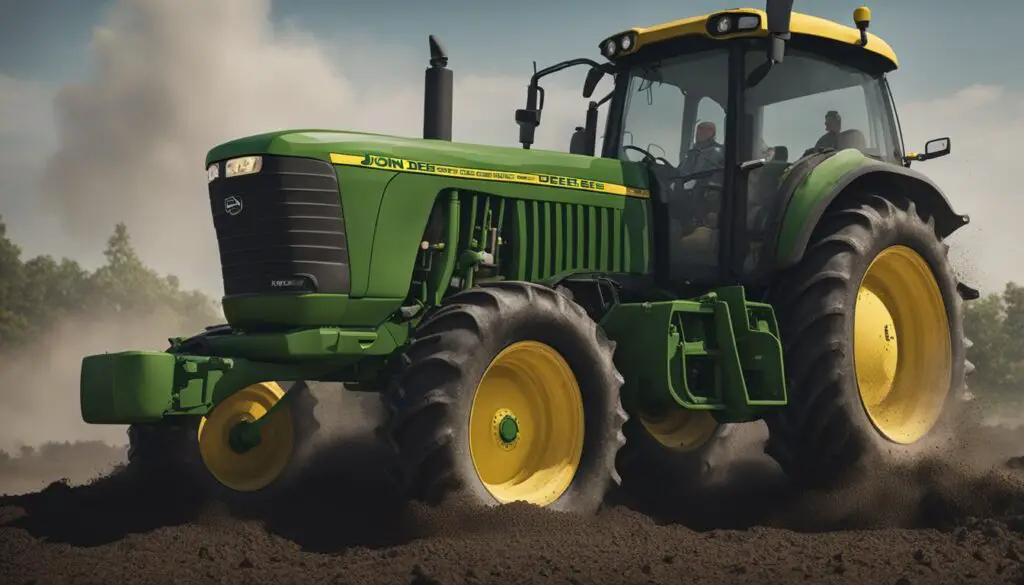
When working with the John Deere 5075E, you might come across some hiccups related to gear shifting and power take-off (PTO) functionality that can affect how you operate your implements. Here’s a breakdown of what you might encounter and some pointers to keep these issues in check.
Gear Shifting Problems
Your John Deere 5075E might experience challenges when shifting gears. If you find the gear shift is too stiff or that you’re unable to engage certain gears, this could be due to a lack of transmission fluid or a more complex internal issue. Common signs to look out for include:
- A refusal to shift into a desired gear
- Slipping out of gear while operating
To maintain seamless operation, it is essential to:
- Regularly check your transmission fluid levels and quality.
- Ensure that the linkage is properly lubricated and adjusted.
PTO and Implement Operations
The PTO (Power Take-Off) is vital for powering your attachments, from mowers to rotary tillers. However, the John Deere 5075E can sometimes face operational difficulties with the PTO or the implements it powers. Pay attention to:
- The PTO not engaging or disengaging properly
- Unexpected noise or vibrations when the PTO is active
For maintaining smooth operations, it’s important to:
- Regularly inspect and tighten any loose connections between the PTO shaft and the implement.
- Monitor the PTO speed and performance, making sure it aligns with the specifications required for your particular implement.
Remember, keeping on top of maintenance for both shifting gears and PTO operations will help ensure consistent performance from your John Deere 5075E and its implements.
Fuel System Management
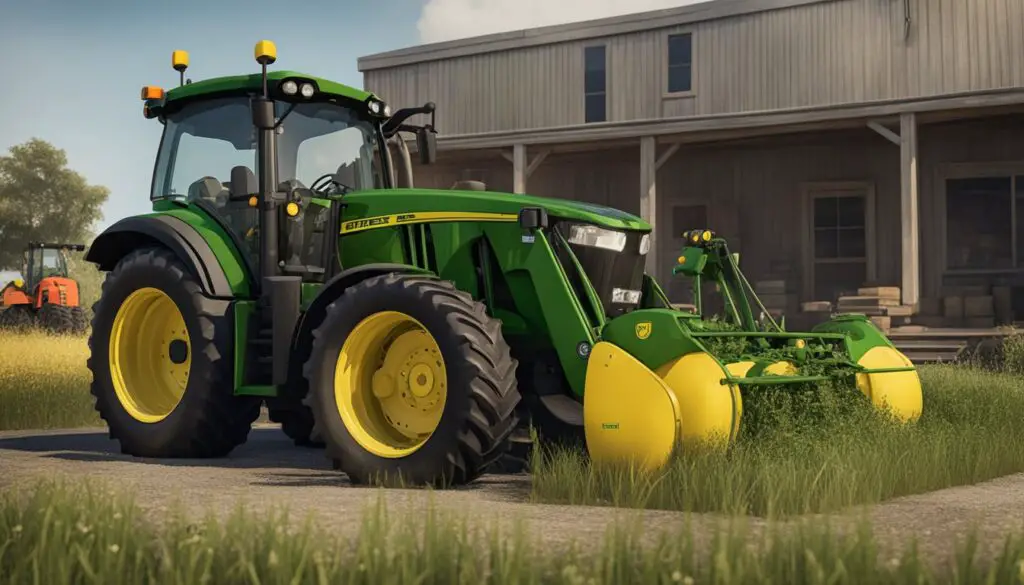
Maintaining your John Deere 5075E’s fuel system is key to ensuring your tractor runs efficiently. Issues with fuel injection and contamination can impact performance, so it’s important to stay vigilant.
Fuel Injection and Pump Issues
Your tractor relies on a well-functioning fuel injection pump to deliver fuel to the engine in precise amounts. Signs that you might be facing fuel pump troubles include difficulty starting the engine or a noticeable decrease in engine performance. If your fuel gauge is not reading correctly, this could also suggest a problem with the pump or fuel sensors.
- Symptoms:
- Engine struggles to start
- Reduced power output
- Potential Fixes:
- Inspect the fuel pump for blockages or damage.
- Check electrical connections to the fuel pump.
Addressing Fuel Contamination
Fuel contamination is a common issue that can lead to larger problems if not addressed promptly. Keep an eye out for signs of dirty fuel, such as engine stuttering or poor performance. Your fuel lines should be clear of any obstructions and be in good condition to prevent contaminants from entering the system.
- Preventive Measures:
- Regularly replace your fuel filters.
- Use clean, high-quality fuel and consider a water separator to keep moisture out.
To tackle any existing contamination issues:
- Drain and clean the fuel tank thoroughly.
- Replace fuel lines if they are worn out or cracked, and consider adding an inline filter for added protection.
Problem-Solving and Repair
In owning a John Deere 5075E tractor, you may encounter gear, clutch, overheating, or power loss problems. Here we outline how to adjust your gears and clutch and cope with any overheating and power loss to keep your tractor running smoothly.
Gear and Clutch Adjustments
If you’re facing gear shift troubles or clutch problems, it’s critical to address these promptly to prevent further mechanical issues. Here’s how you can make necessary adjustments:
- Gear Shift: Ensure the tractor is turned off before checking the gear shift linkage for any signs of wear or damage. If adjustment is needed, loosen the linkage bolts moderately, shift into neutral, and then retighten.
- Clutch: For clutch-related issues:
- Clutch Dragging: If you notice clutch dragging, it may require a simple adjustment. Look under the tractor to the clutch linkage. Adjust the turnbuckle to decrease the free travel of the pedal.
- Clutch Slipping: When experiencing a slipping clutch, this often means the clutch disc has worn down. Inspect the disc—replacement may be necessary. Regular adjustments can mitigate wear over time.
Dealing with Overheating and Power Loss
When your John Deere 5075E experiences overheating or loses power, tackle these problems without delay:
- Overheating:
- Check the coolant level in the radiator and refill if it’s low.
- Inspect the radiator for any blockages and clean debris from the fins to improve airflow.
- Verify that the thermostat is functioning correctly; replace it if it’s defective.
- Power Loss Problem:
- Fuel Filters: Dirty fuel filters can lead to power loss. Replace them according to the service interval specified in your owner’s manual.
- Air Filters: A clogged air filter restricts the airflow to the engine, resulting in reduced power. Clean or replace your air filter as needed.
- Fuel Quality: Poor fuel quality can cause a reduction in engine performance. Always use fresh, high-quality diesel fuel.
Enhancing Longevity and Performance
To ensure your John Deere 5075E tractor serves you well into the future, paying attention to preventive measures and upgrading components is key. Focusing on proactive maintenance and judicious upgrades can help mitigate common problems, enhancing durability and overall tractor performance.
Preventive Measures
Regular Maintenance Checks: Begin with routine checks and timely maintenance. Inspect your tractor for oil pollution and keep an eye on the fuel filter, as these are common culprits that can impact performance.
- Fuel Filter: Ensure that the fuel filter is checked and replaced periodically to prevent clogging, which can lead to engine power loss.
- Oil Quality: Use clean, high-quality oil to prevent pollution of your tractor’s engine and other components.
Battery Maintenance: Keep the battery terminals clean and tightly connected to avoid starting issues. Corroded terminals can lead to poor electrical conductivity and reduced battery life.
Upgrading Components
Enhanced Air Filtration: Consider upgrading to a high-performance air filter if you operate in dusty conditions. This helps safeguard the engine by providing cleaner air, which can lead to improved engine efficiency.
- Upgraded Fuel System Parts: Replacing older fuel system components with modern, more efficient parts can help prevent fuel-related problems.
Cooling System Upgrades: An improved cooling system can prevent overheating, a common issue that reduces performance and can contribute to long-term engine damage.
Remember, investing time and resources into these preventive and upgrading strategies is essential in extending the life and enhancing the performance of your John Deere 5075E tractor.
Frequently Asked Questions
In this section, you’ll find answers to some of the most common concerns regarding the John Deere 5075E tractor, from mechanical to electrical issues.
What are common mechanical issues with the John Deere 5075E?
Your John Deere 5075E may encounter typical mechanical problems such as transmission, clutch, or hydraulic issues. Swiftly addressing these can help maintain your tractor’s performance.
How does the John Deere 5075E perform in terms of reliability?
The John Deere 5075E is generally regarded as a reliable tractor. Nevertheless, like any machine, it may experience occasional problems such as starter or fuel gauge issues.
Are there any recurring electrical problems in the John Deere 5075E?
Some owners have reported electrical issues, including problems with the battery, wiring connections, or the PTO solenoid. Regular maintenance is key to resolving and preventing such problems.
What have owners reported as the top issues for the John Deere 5075E from the 2021 model year?
Owners of the 2021 John Deere 5075E have notably faced cooling system issues, hydraulic pressure inconsistencies, and occasional fluid leakages from the transmission.
Have there been significant transmission problems with the 2018 John Deere 5075E?
The 2018 John Deere 5075E model has had some cases reported of transmission slippage. It’s important to check the transmission fluid regularly and service when necessary to avoid this problem.
What are some troubleshooting tips for the John Deere 5075E PTO solenoid?
If you’re facing issues with the PTO solenoid on your John Deere 5075E, check for any electrical faults, ensure the solenoid is clean, and double-check that all connections are secure and corrosion-free.
Last updated on September 7, 2025
